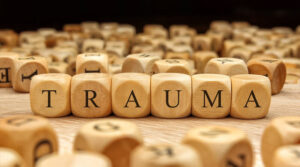Babies, for their survival, need close bonds and attachments to their caregivers. They need to be able to rely on them for safety, food and care. To form a secure self in their adulthood, children need to be able to trust and have confidence in their parents to be always there and reliable for them, however, if, for any reason, the caregiver is not able to provide that care and safety, that secure bond will not be formed between the child and the carer. The reasons for this insecure bond or attachment vary, from the absence (physically or emotionally) of one or both of the parents to emotional neglect or abuse. This will result in the adult’s vulnerability in the future, having difficulties in forming or maintaining secure relationships as a grown up, as these present relationships will be affected by the past ones.
Looking back at our past, we may find it difficult to pinpoint what has gone wrong in our relationships with our parents, as those past experiences can become unconscious and not easily accessible to look at. However, looking at the patterns of our present relationships, we can trace our past bonds with our caregivers. Unfortunately, these patterns of attachments will continue through our lives, generation to generation, unless someone breaks the pattern. A parent with a history of insecure attachment is not able to form a secure bond with his/her child and, will, therefore, predispose the child to relationship difficulties in the future.
What are the different forms of attachments?
Secure attachment:
Parents of securely attached children are reliable and react quickly to their children’s needs. These parents respect their children’s needs and individuality and don’t use them for their own needs.
Therefore, these children, as adults, feel secure within themselves. They can be independent, but, at the same time, are able to form trusting relationships and are not afraid of depending or relying on their partners. In a secure relationship, both partners are emotionally open and depend on each other, but are also independent, feeling safe to move around freely without the fear of losing their partners. This stems from having a parent who’s been always there and reliable for the child to come back to whenever she/he needs comfort.
Anxious preoccupied attachment:
Children with anxious preoccupied attachment tend to have parents who are inconsistently attuned to them. At times, they are nurturing and caring and responsive to their child, while, at other times, they are dismissive, intrusive and unavailable to them. These children tend to be very clingy to their mother and desperate for their attention; however, when their mother is close, they become agitated and avoid her. An adult with an anxious attachment feels desperate to form a relationship, but their sense of safety and security comes from clinging to their partner in an anxious way, as they fear abandonment. These adults find independency of their partners as a confirmation of their fear of rejection. However, their clinginess backfires and usually leads to rejection and abandonment. They often have a self-critical voice and constantly need reassurance from others, but even that does not relieve their self-doubt. These adults, and also children, have extreme feelings of emptiness.
Avoidant attachment
Children with avoidant attachment learn at a young age not to show any distress or discomfort to their parents due to fear of rejection and punishment. Parents of avoidant children tend to be mostly emotionally unavailable to their children. They tend to ignore their children’s needs and can be rejecting or punishing. These children, and later as adults, tend to have a huge amount of underlying sadness that they try to suppress at all cost. These children, in an unconscious way, can be anxious and hyperactive just to avoid getting in touch with their sadness.
Adults with avoidant attachment, emotionally distance themselves from their partner. While they consider themselves as independent, this feeling of independency is an illusion and they actually tend to feel very lonely and isolated. These adults can easily detach from their emotions and also from their partners.
Anxious Avoidant Attachment
Parents of anxious avoidant children are often emotionally absent or rejecting towards their children. These children, like avoidant children, distrust their caregivers, but, unlike the avoidant children, they realise that they need intimacy; however, when they get close in a relationship, they begin to mistrust and fear their partner and want to withdraw. They may cling to their partners when rejected, but feel trapped when their partner gets close. Therefore, their relationships have many highs and lows.
These adults usually think that there is something wrong and unacceptable about them and believe that, if anyone gets to know them, it will lead to them being rejected or betrayed; therefore, they tend to keep their distance and their friendships or relationships tend to be very shallow.
How does therapy help?
Psychodynamic therapy believes that our personalities and our problems are shaped by our childhood and the relationships we had with our caregivers. It believes that early relationships are one of many key elements that form who we are today.
Psychodynamic psychotherapy explores these early attachments and their effects on our wellbeing and relationships. The therapeutic relationship with the therapist is also very critical, as it challenges these attachment issues so they can be worked through and be resolved.
Please feel free to Contact me if you wish to have a brief chat or to book an appointment.



